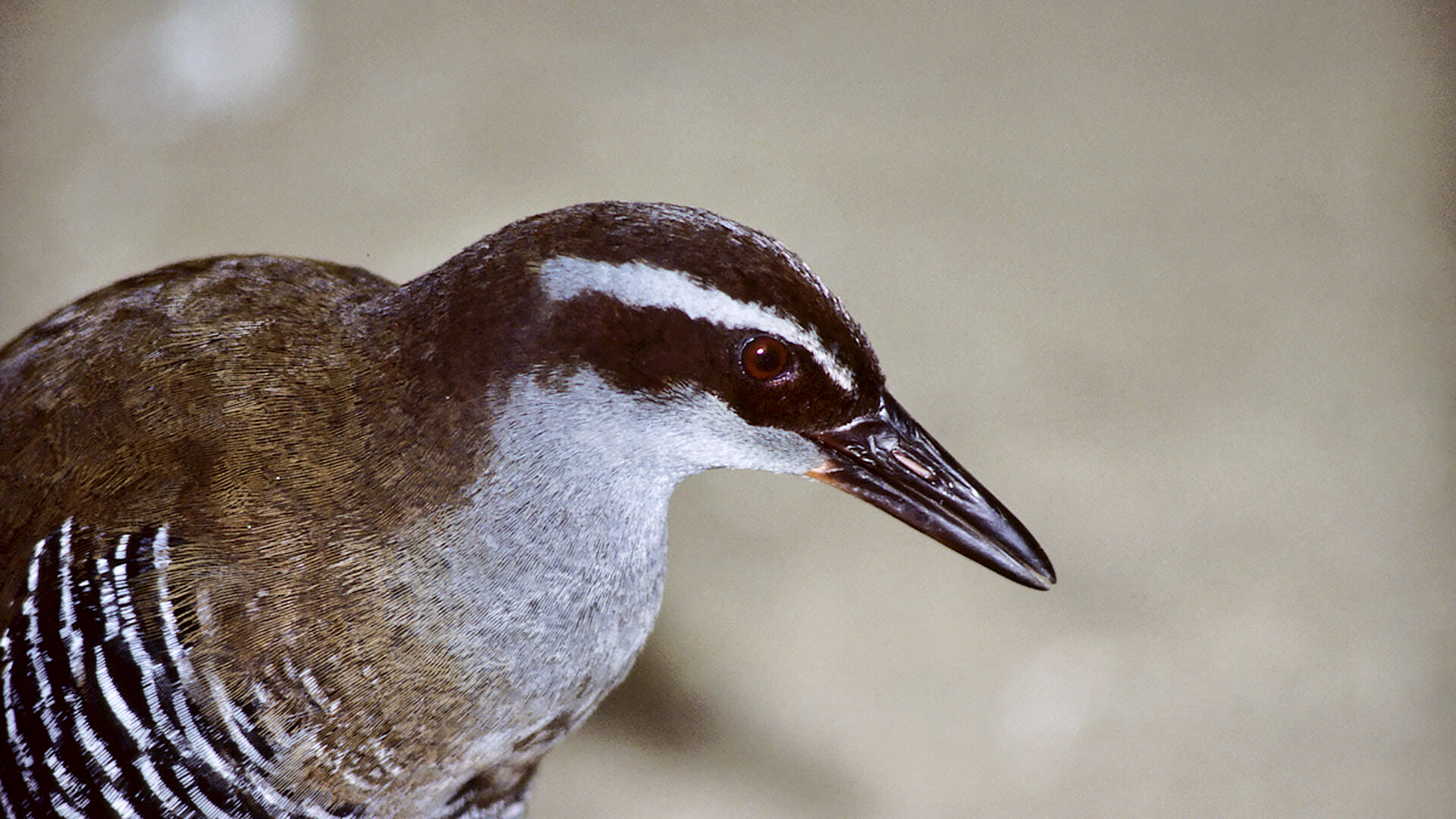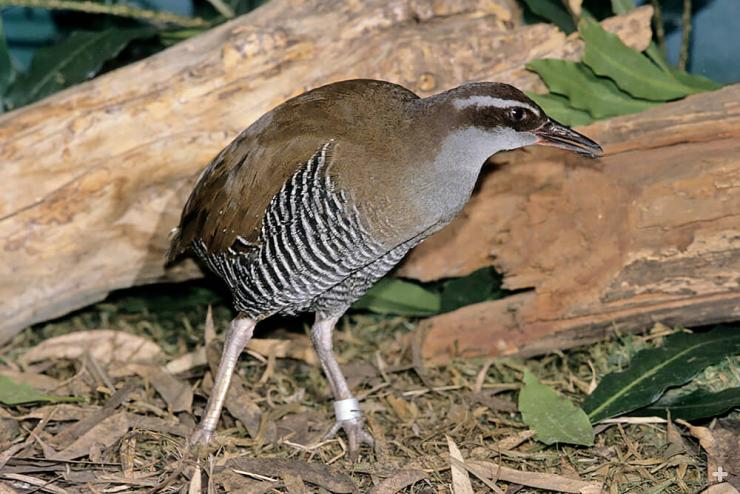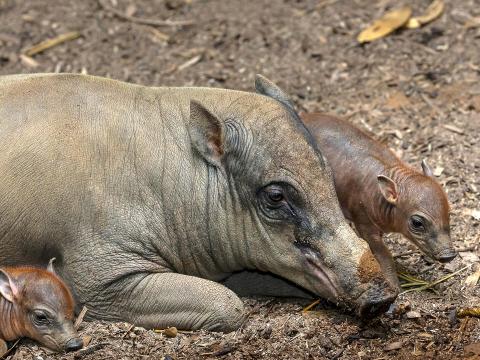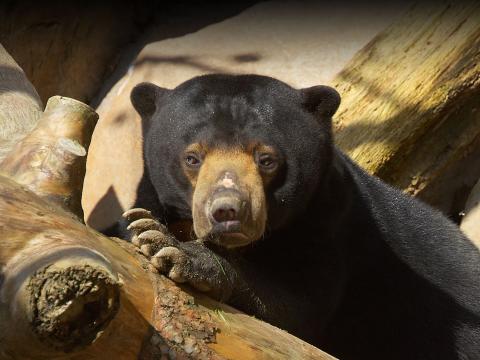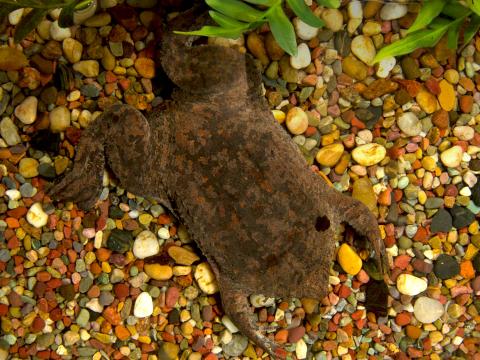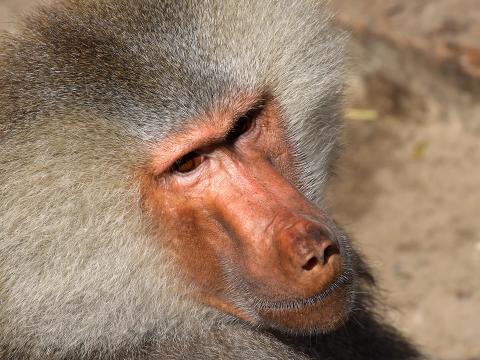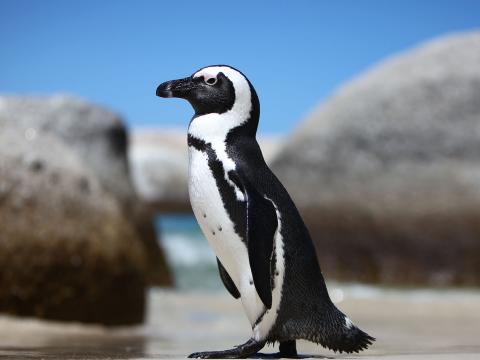Guam Rail
- CLASS: Aves (Birds)
- ORDER: Gruiformes
- FAMILY: Rallidae
- GENUS: Gallirallus
- SPECIES: owstoni
ABOUT
A rare bird, indeed! The Guam rail is native to Guam in the western Pacific Ocean and is found nowhere else in the world. Most rails are somber and solid in color, but the Guam rail has dark brown and white stripes called bars beneath a plain mantel of light brown, shading to buff on the neck. A white eye stripe draws attention to the narrow, blackish bill. Its medium-length legs are strong, and the long toes help the bird to walk over grasses and soft marsh mud. Its narrow body is an adaptation for running through thick marsh grass, weeds, and underbrush.
Little is known about the secretive and territorial Guam rail. Why? Because there are so few of them in their native habitat. We do know that rails are very good at walking, or even running, without making any noise, even when moving through thick vegetation.
The Guam rail, like other island rails, is virtually flightless. This is probably because there were no natural predators on its native island to bother them. While they do not have much in the way of flight muscles, they do have well-developed leg muscles. And they can swim, dive, and even sink, using their wings underwater.
HABITAT AND DIET
When brown tree snakes arrived on Guam, most likely on cargo ships in the 1940s and 1950s, they wiped out the rails and other native wildlife populations. When the rails were relocated to a snake-free island, they fell prey to feral cats. Control of the snake and feral cat populations is needed if these birds are to be successful in their native habitat once again. Currently, they live in the wilderness only on the island of Rota, as an introduced population.
Guam rails are omnivorous, although they do prefer animals instead of plants. Common menu items include skinks, geckos, fish, snails, slugs, insects, tomatoes, melons, seeds, and palm leaves. The rails generally eat food that is on the ground but are known to catch low-flying insects, including butterflies. They do most of their foraging at dawn and dusk.
Guam rails at the San Diego Zoo Safari Park eat crickets, mealworm larvae, mice, dog chow, and a specialized meat mixture for zoo carnivores.
FAMILY LIFE
Guam rails are year-round ground nesters, producing up to 10 clutches a year. Both parents build a shallow nest of grass and leaves hidden in dense grass. The female lays one to four eggs. The downy black chicks are able to leave the nest within 24 hours of hatching, although both parents continue to feed and care for them. They grow very quickly, getting their juvenile feathers at four weeks and reaching their adult weight at just seven weeks. They are able to become parents themselves at four months of age!
Although Guam rails seldom vocalize, they do respond to other rails, loud noises, or other disturbances with a loud, piercing whistle or series of whistles. During breeding season, the birds make loud, penetrating screeches and short kips.
CONSERVATION
Prior to the 1960s, there were probably around 10,000 Guam rails living on Guam, a South Pacific island. Sometime between 1944 and 1952, brown tree snakes Boiga irregularis arrived on Guam, most likely on cargo ships. The snakes’ population rapidly increased, because there was lots of prey (such as the Guam rails) and no natural predators. Prior to the tree snakes’ arrival, there were no snakes on Guam, so the rail, like other native wildlife there, had not developed natural defenses against this predator. The tree snakes wiped out the native wildlife populations, and by the 1970s, 9 of the 11 native birds, including the Guam rail, had disappeared.
In an effort to save the Guam rail, the last few birds were removed from the island in the 1980s. In 1989, reintroduction of these birds began on the island of Rota, near Guam, as part of the Association of Zoos and Aquarium’s Species Survival Plan for the Guam rail. It is hoped that controlling the feral cat population on this island will help with the Guam rail’s success there. San Diego Zoo Wildlife Alliance is participating in both the breeding programs and current reintroduction programs on Guam and nearby Rota Island. Some of the rails now living in their native habitat were raised in our care.
By supporting San Diego Zoo Wildlife Alliance, you are our ally in saving and protecting wildlife worldwide.

